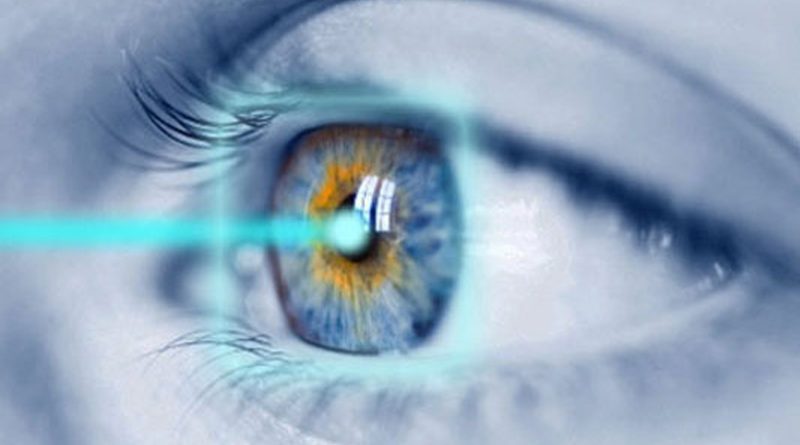LASIK is the abbreviation for laser in-situ keratomileusis. It is a commonly performed surgery to correct refractory errors and restore a near to glasses free vision in people who are nearsighted, farsighted, or have astigmatism (1).
Though the excimer laser had been used for many years before, the development of LASIK is generally credited to Ioannis Pallikaris from Greece around 1991(2).
Procedure – Anesthetic drops are used that numb the surface of the eye. The patient is in awake state throughout the entire procedure. LASIK may be done on one or both eyes during the same session (3)
In this procedure, a highly specialized laser (excimer laser) alters the shape of the cornea, which is the transparent front covering of the eye thus a flap of corneal tissue is created. This flap is then peeled back so that the excimer laser can reshape the corneal tissue underneath. A hinge on the flap prevents it from being completely separated from the cornea.
A common and safer method utilizes different type of laser (femtosecond) to create the corneal flap. The amount of tissue the laser will remove is calculated ahead of time. Once the reshaping is done, the surgeon replaces and secures the flap. No stitches are involved. The cornea will naturally hold the flap in place (3).
LASIK laser eye surgery has many advantages –
- It works and is proven to correct refractive error and restores permanent vision in most cases.
- LASIK laser eye surgery is associated with very little pain and temporary discomfort.
- Vision is corrected almost immediately post the procedure or by the day after LASIK laser eye surgery.
- Recovery is quick and usually no bandages or stitches are required after LASIK laser eye surgery.
- Adjustments can be made years after LASIK laser eye surgery to further correct vision.
- After having LASIK laser eye surgery, most patients no longer need corrective eyewear (4).
Risks – As with all the surgeries there is some risk involved in the procedure, however mostly Lasik eye surgery is a safe procedure, there are certain complications that one needs to be aware of –
Complications that result in a loss of vision are very rare. But certain side effects of LASIK eye surgery, particularly dry eyes and temporary visual disturbances which are transient (5)
- Dry eyes due to a temporary decrease in tear production.
- Glare, halos and double vision – this is transient.
- Undercorrections are more common for people who are nearsighted.
- Overcorrections can occur when the laser removes too much tissue from the eye.
- Astigmatism can be caused by uneven tissue removal. It may require additional surgery, glasses or contact lenses.
- Flap problems can cause complications, including infection and excess tears.
- Vision loss or changes. Rarely, one may experience loss of vision due to surgical complications.
Outcomes of modern LASIK surgery, as measured by visual acuity, refractive results and patient satisfaction, are better than ever, according to a meta-analysis of recent studies of the vision correction procedure (6).
References –
- https://www.webmd.com/eye-health/lasik-laser-eye-suregery#1
- https://www.medicinenet.com/lasik_eye_surgery/article.htm#what_is_refractive_error
- https://medlineplus.gov/ency/article/007018.htm
- https://www.webmd.boots.com/eye-health/guide/lasik-laser-eye-surgery
- https://www.mayoclinic.org/tests-procedures/lasik-eye-surgery/about/pac-20384774
- http://www.allaboutvision.com/visionsurgery/lasik.htm
